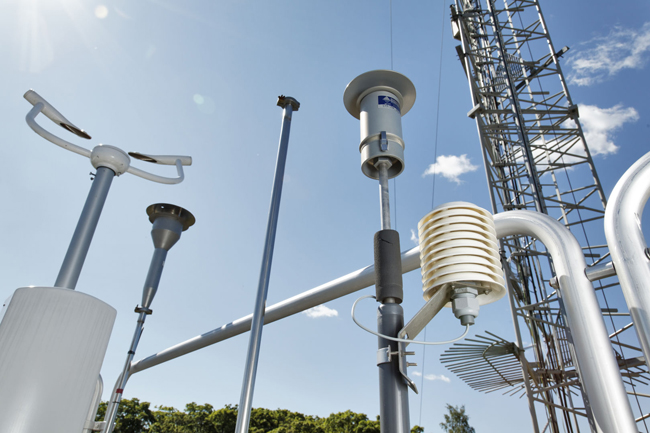WP1: Observations
WP1 develops an observational network system that can be formed, e.g., from pre-existing in situ sensors, remote sensing instruments and publicly available near-real-time data. Central to this is an Observation Network Manager developed by Vaisala, which collects the multisource data and allows their fusion into comprehensive information suitable for a wide range of end users. A combination of wired and wireless gateway sensor networks will be developed to support a multitude of instrumentation systems to be incorporated. Initially this project will implement a network of air quality monitoring instruments providing also interfaces for additional sensor systems like soil moisture sensors for mud-flood predictions, water level detectors, as well as snowpack thickness and water content detectors. Additionally data from the existing air quality monitoring network of the Helsinki Region Environmental Services Authority HSY will be fed into the system. C-band weather radars will be utilized as remote sensing data sources offering a compromise between coverage, resolution and expenditure ideal for most types of target areas. Both the air quality data from HSY and the weather radar data will be retrieved from publicly available data repositories thereby broadening the base of the available observational data and demonstrating the possibility of integrating existing networked data from independent vendors or governmental agencies also outside Scandinavia.
The observational network system will form a major building block of the CityzerDemo, a demonstration environment to be implemented in the Helsinki area, forwarding the collected data via a unified interface to the diagnostic and analysis tools for further post-processing. These will be implemented in the scope of WP2 on portable, stationary or cloud servers.
The use of the network sensors requires detailed knowledge of how representative the in situ measurements are for the prevailing environmental conditions. Based on the observations, parameterization schemes for atmospheric data fusion algorithms and atmospheric dispersion of road traffic pollutants will be generated. These will be tested in dedicated field campaigns at different locations, utilizing a new mobile laboratory, the Portable Emission Measurement System (PEMS), and mobile ageing chambers of the Tampere University of Technology (TUT) and FMI as well as air quality monitoring stations of HSY. Focus will be the effect of special traffic situations (e.g. rush hours, driving cycles in the city center) on the emissions.
The intelligent sensor network controllers together with the semi-autonomous sensors will provide continuous diagnostic support to create a portable, scalable and robust service environment concept for meteorological, climatic and air quality data. The technical solutions developed in this WP will have commercial and scientific potential to be exploited also in other application areas.

Air quality measurement instruments in Kumpula, Helsinki. Photo: Anton Halas.